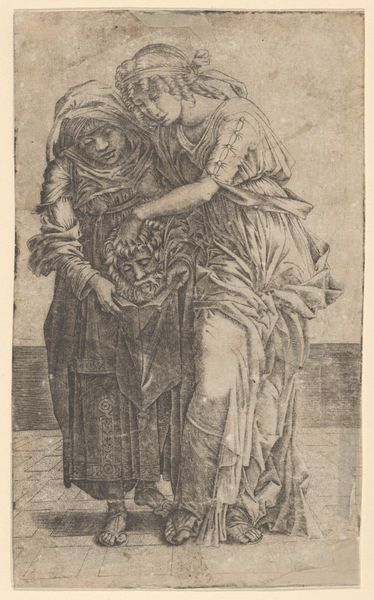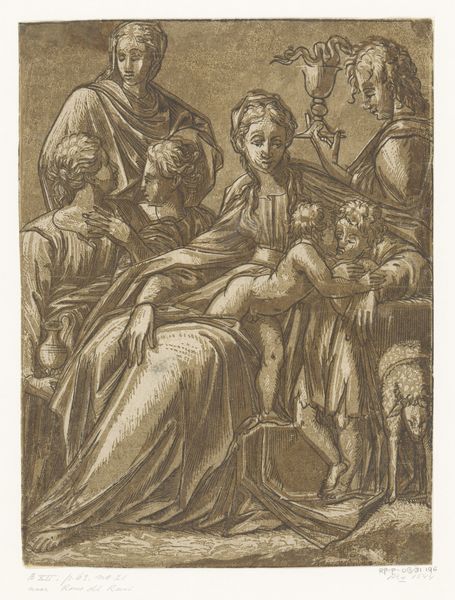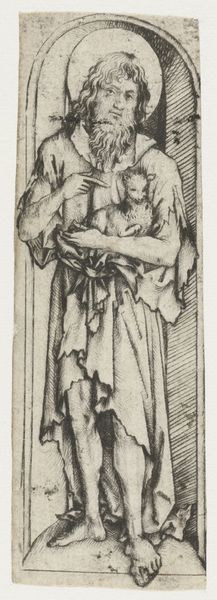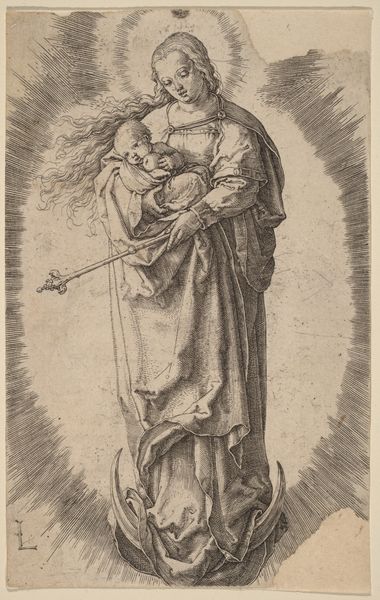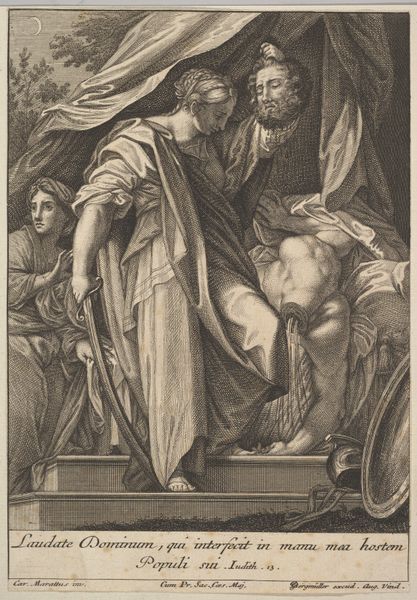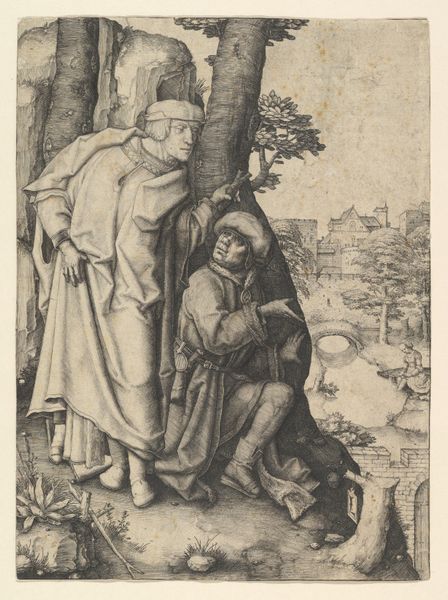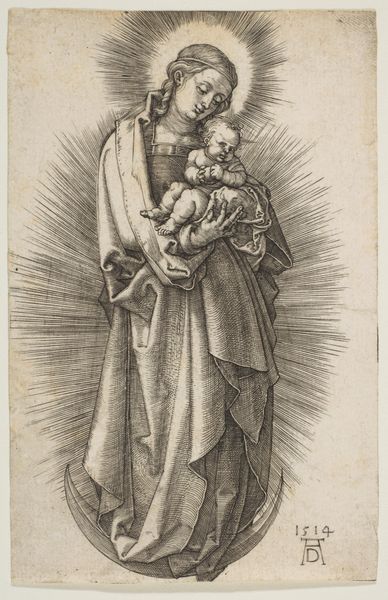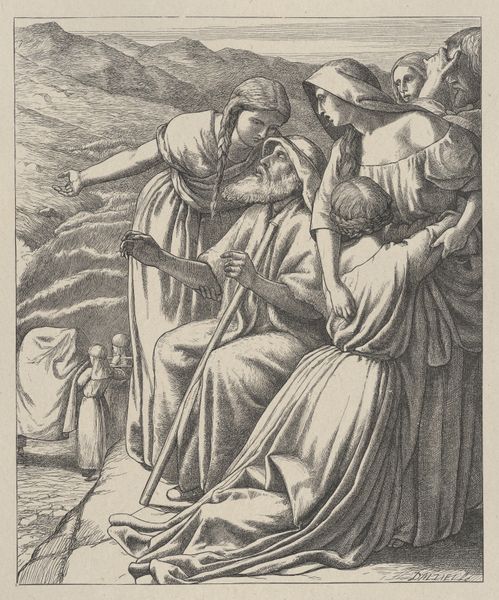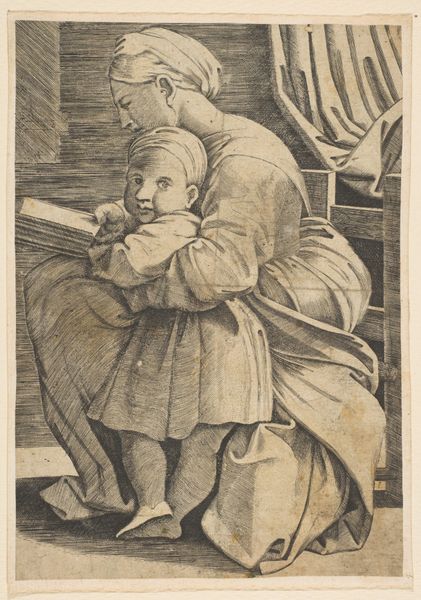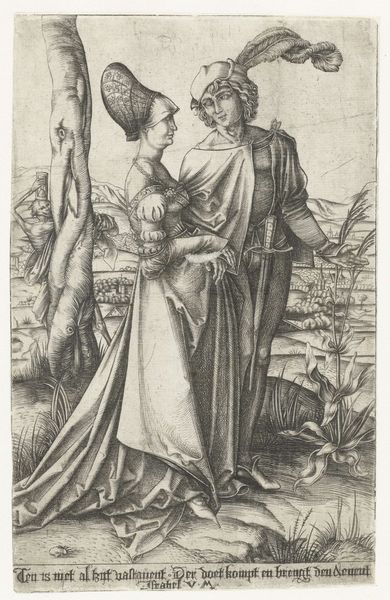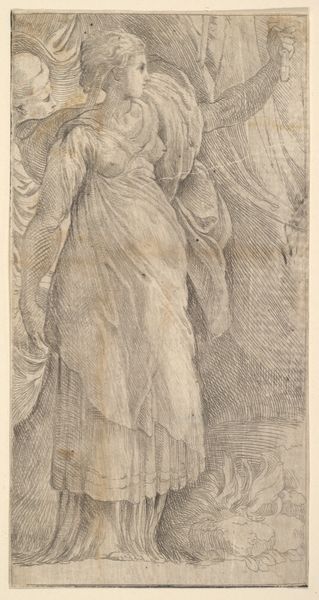
Judith and her maidservant with the head of Holofernes 1495 - 1535
0:00
0:00
drawing, print, engraving
#
drawing
#
narrative-art
# print
#
figuration
#
history-painting
#
italian-renaissance
#
engraving
Dimensions: Sheet: 13 3/16 × 8 7/16 in. (33.5 × 21.5 cm) trimmed
Copyright: Public Domain
Editor: So, this is Girolamo Mocetto’s "Judith and her maidservant with the head of Holofernes," an engraving probably made sometime between 1495 and 1535. There's something almost serene about it despite the rather gruesome subject. It is amazing how Mocetto conveys so much depth and shading, so that they appear as three-dimensional beings in their draping clothing. What are your initial impressions? Curator: The linearity of the engraving, the almost architectural precision in the folds of Judith’s gown – note how these repeated vertical lines, anchored by her stable pose, convey both power and control. Consider also the carefully modulated tones achieved through hatching and cross-hatching; observe the strategic deployment of light and shadow. The stark contrast around Holofernes' head amplifies its dramatic presence. Editor: It’s fascinating how you see the lines and light working to convey power. I was more focused on the sort of contained emotion. Curator: Emotion certainly exists. The question is, how is that emotion *constructed* formally? Note the slight downturn of Judith’s mouth, barely perceptible. Her gaze is averted; consider how this deflection functions compositionally to subtly underscore her action. The textures – the crisp linen against the dull lifeless head - what purpose does this contrast serve? Editor: Ah, I see. It's not just the subject matter, but the *way* it's depicted, the formal choices, that generate the feeling. I hadn't really considered that contrast you mentioned either – very effective. Curator: Precisely. Formal analysis provides the vocabulary with which to discuss effect, technique, and representation without immediately appealing to, or relying exclusively on, narrative interpretation. Editor: That gives me a lot to think about when I look at engravings and other works from the period! Thank you. Curator: Indeed. Focusing on the form enables a deeper, more nuanced, appreciation of artistic intent and visual communication.
Comments
No comments
Be the first to comment and join the conversation on the ultimate creative platform.
